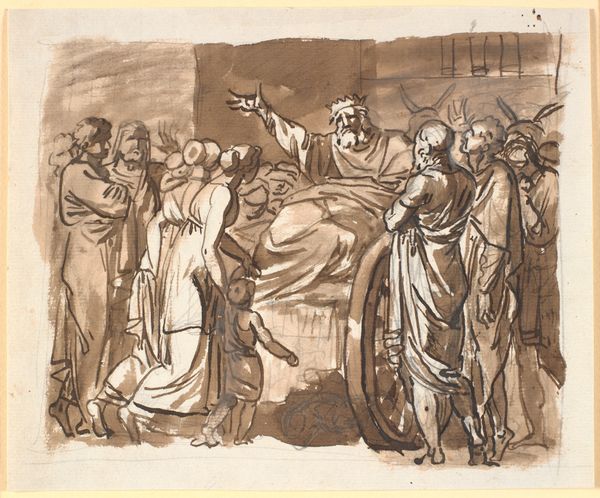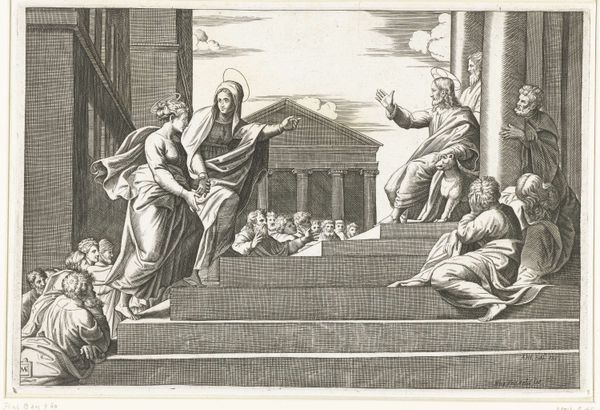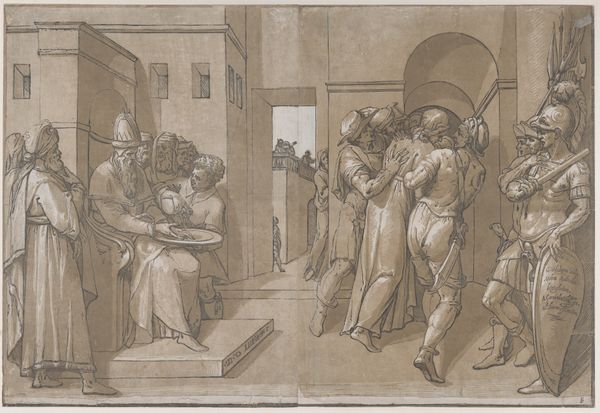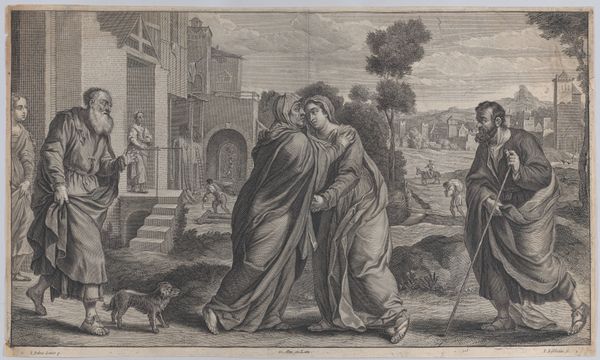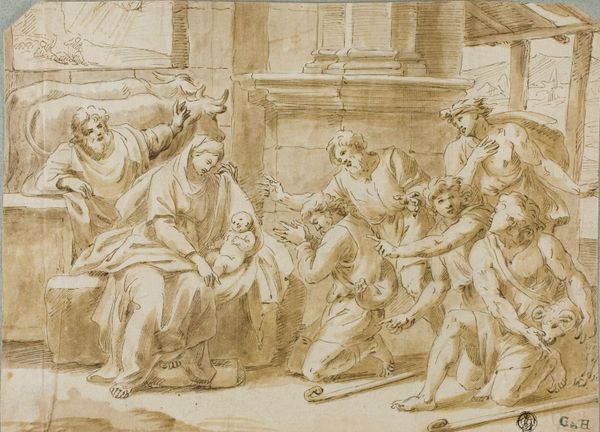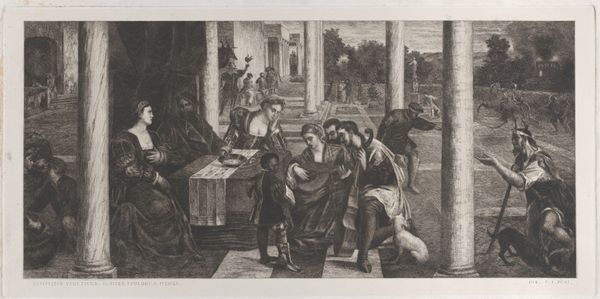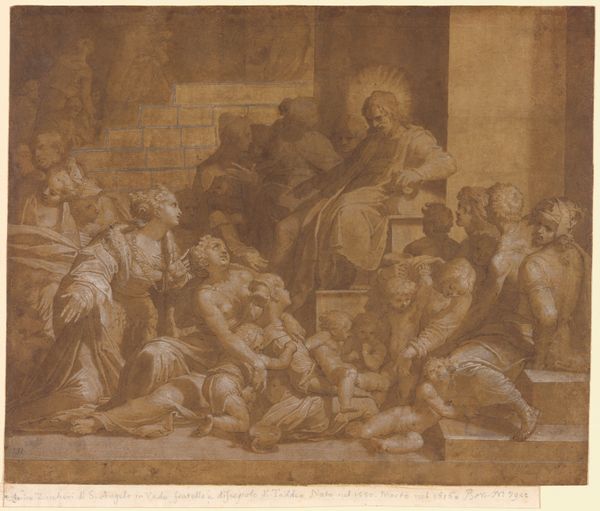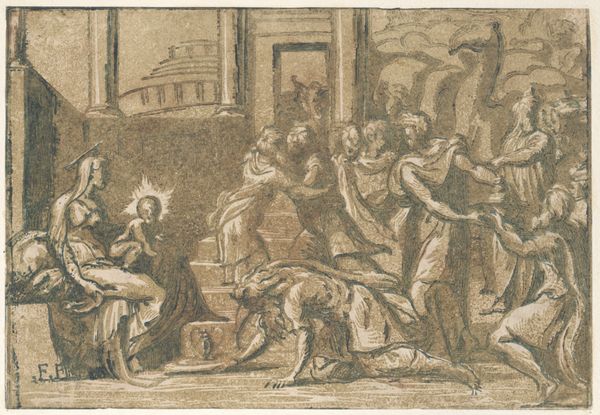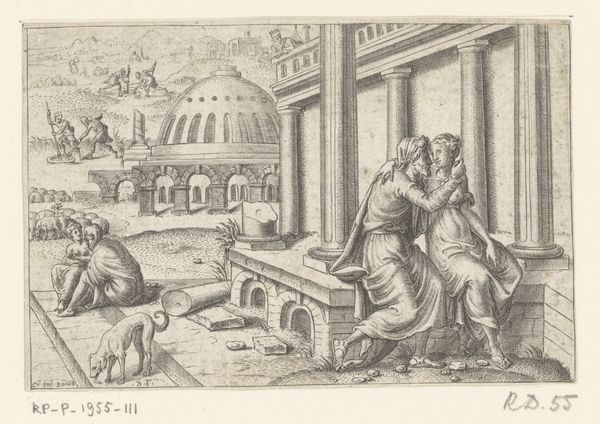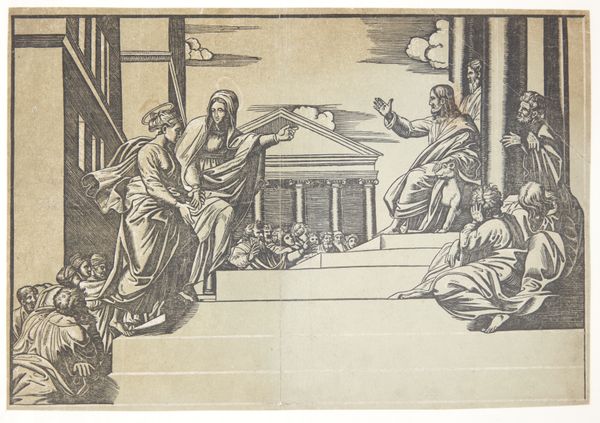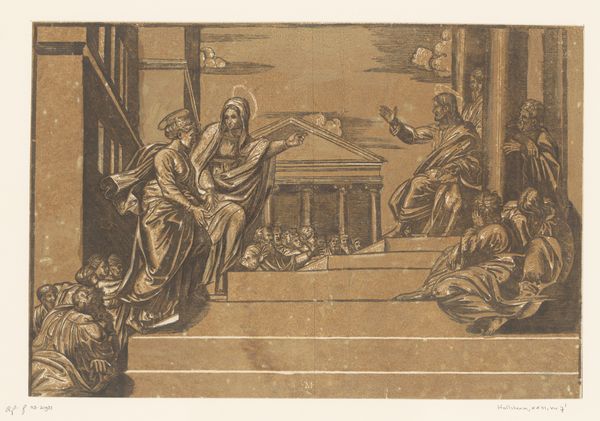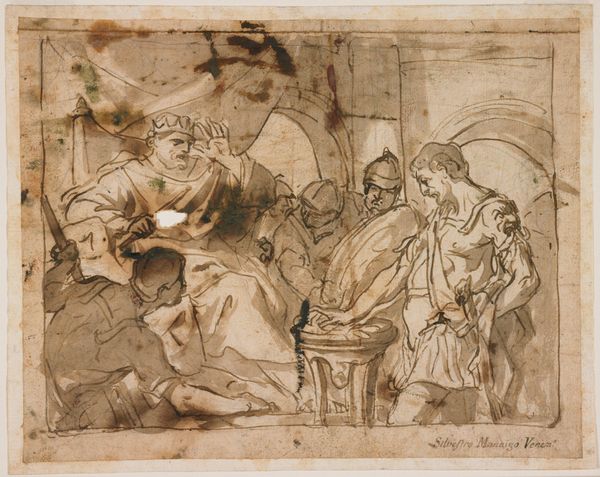
The Slave Davus and the Maid Mysis. From Terence´s Andria. 1804
0:00
0:00
painting, oil-paint, mural
#
neoclacissism
#
narrative-art
#
painting
#
oil-paint
#
perspective
#
figuration
#
oil painting
#
classicism
#
cityscape
#
history-painting
#
academic-art
#
mural
Dimensions: 157.5 cm (height) x 142 cm (width) (Netto), 169.8 cm (height) x 154.8 cm (width) x 5.6 cm (depth) (Brutto)
Editor: So this is Nicolai Abildgaard's *The Slave Davus and the Maid Mysis. From Terence's Andria.*, painted in 1804. It's an oil painting, and it feels very staged to me, almost like a theatre production. What do you see in this piece? Curator: I’m immediately drawn to the artist's material choices. Abildgaard opts for oil, a medium often associated with the established art world. Yet, by choosing to depict characters from Roman comedy, specifically enslaved people, he's using the high-art status of oil painting to represent the laboring class and challenge the strict social hierarchy of the time. Note also the imposing architectural features – the production of such spaces often relying on exploitation. Editor: That's fascinating. I hadn't considered the social implications of his medium choices, but it's an interesting point. The title mentions that the characters are from "Terence's Andria" – why would this historical context and material relationship to labor matter? Curator: Terence, an author of the Roman Republic, was of likely North African descent enslaved in Rome, whose plays themselves are re-presentations of even earlier Greek plays. Abildgaard isn't merely illustrating a play; he’s engaging with a layered history of cultural production, enslaved labor, and re-interpretation across social status, cultures and time. Even the very idea of making oil-based paints using costly mineral sources speaks to resource availability and economic infrastructure. Editor: So, the painting becomes not just about the narrative within the play, but about the means of its production and our own consumption of that history? Curator: Precisely. Think of the canvas itself – linen, woven from flax, then stretched and prepared to receive the paint. Each element involves labor, skill, and access to resources. The narrative within the scene reflects on this dynamic, but the very nature of the objects to create this image are implicated too. Editor: This makes me consider how artwork isn’t just about seeing but is deeply entrenched with how art is made accessible through consumption, especially reflecting back upon economic status. Curator: And it all points towards understanding art not in isolation, but as deeply embedded in processes, and reflecting cultural material.
Comments
No comments
Be the first to comment and join the conversation on the ultimate creative platform.
